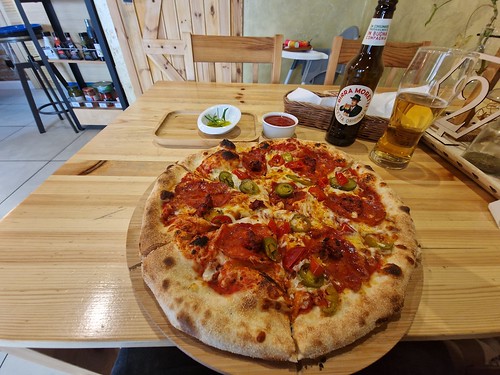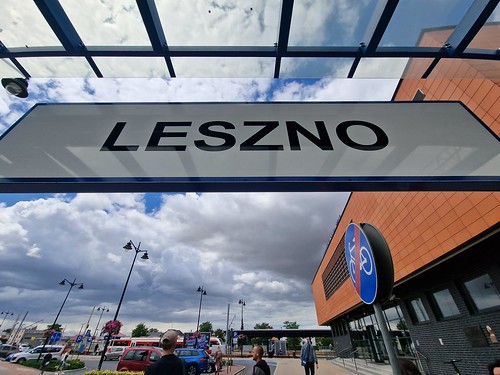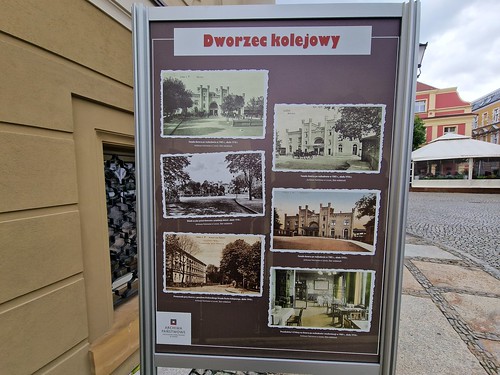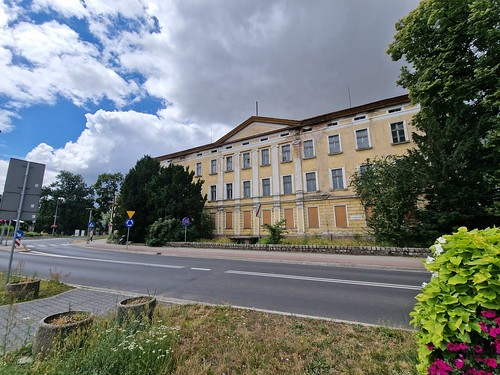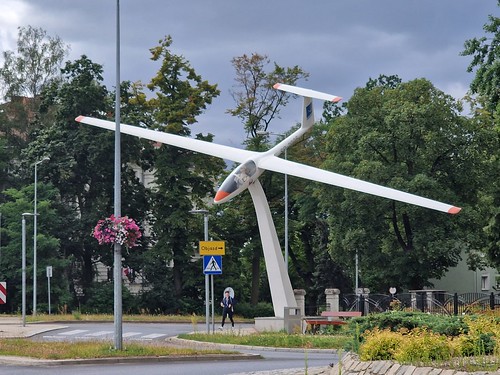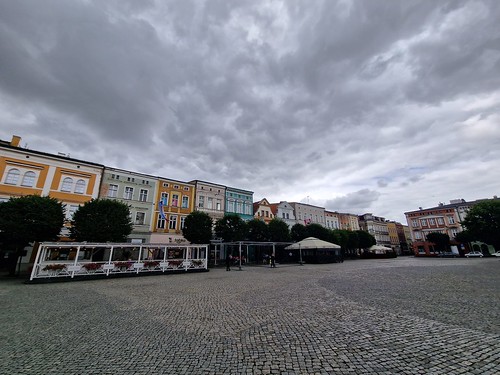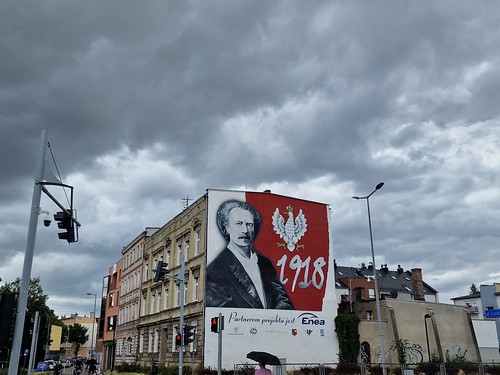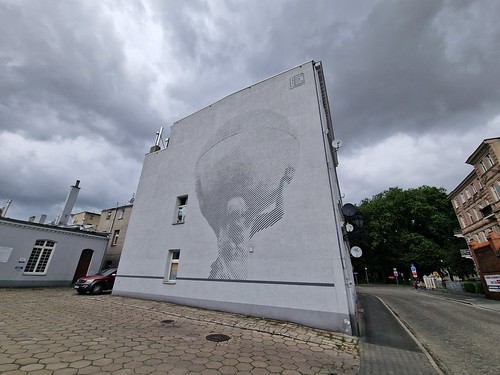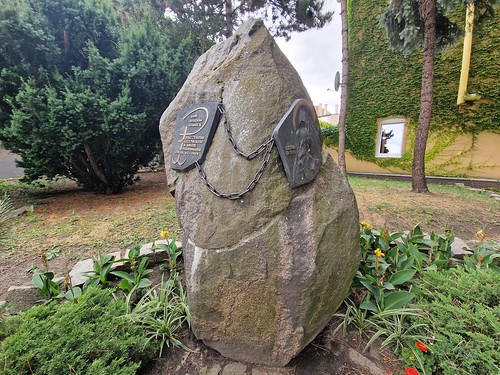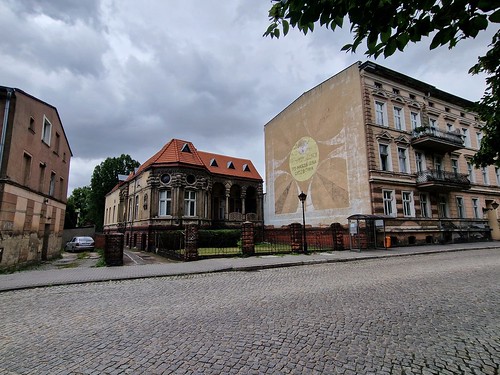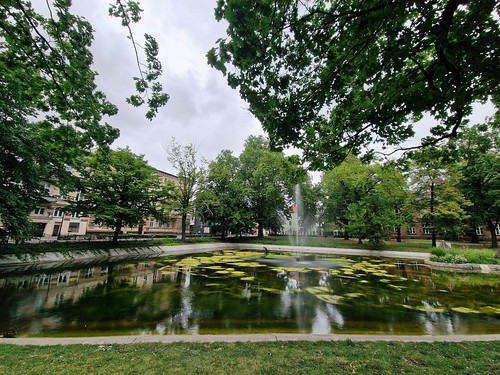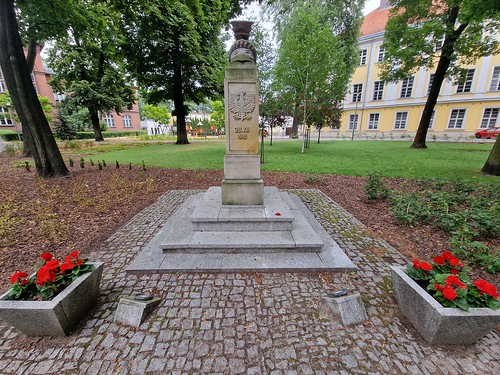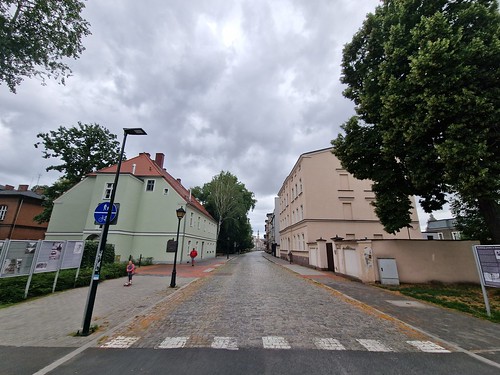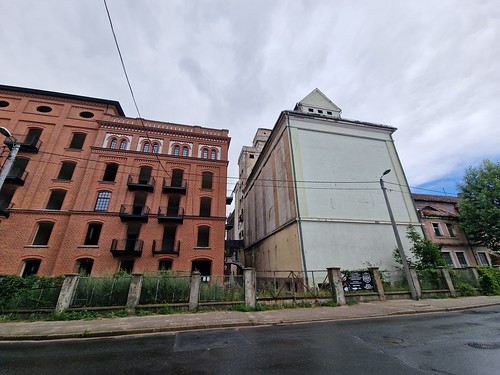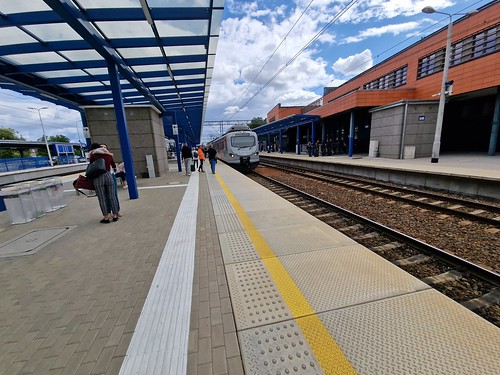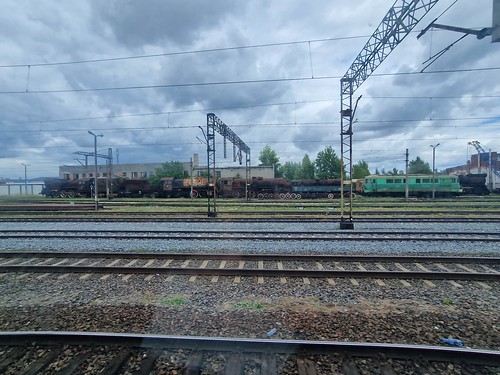Sunday : Day Trip to Leszno
I thought I’d have a day out to Leszno, departing from Poznan’s main railway station. I had a little bit of a faff buying the railway tickets as the machine was being temperamental and demanding my debit card be inserted within two seconds, or it cancelled the transaction. Fortunately, its brother machine next to it was more tolerant.
Track 54, keeping it simple for passengers.
Note I arrived thirty minutes before the train (I’m rarely in danger of being late for public transport), which was one of my better ideas as it soon started to fill up.
The seating is terrible, the knees of passengers almost touch the other side, so there’s really not space for people to sit opposite each other. That means a lot of seats are left unused and people stand, but these trains are dated and are (hopefully) probably on their way out.
About six miles from Leszno the train just stopped, so I stared out of the window at this for some time. There were no announcement why we stuck there for a little ten minutes, but the driver got out of his cab and looked annoyed at his train for a good couple of minutes. No passenger seemed concerned that there was a delay, which was reassuring for me at least. I think it’s better that there are no announcement than an announcement in Polish that I don’t understand, as then it would only be me who was confused what was happening.
Safely in Leszno, only around ten minutes late.
And a sign to prove that I was definitely in the right place.
There’s a photo at the railway station of the building that stood until the 1960s. Jumping ahead though, I saw this board in the town centre and it shows just what a grand railway station they had. I cannot understand why in the late 1960s they demolished this beautiful building for a piece of 1970s junk that they put up in its place.
In fairness, they’ve done a great job at hiding the 1970s building by a modernisation programme, with this new station winning numerous design awards. It’s not as exciting as the one which looked like a castle though, that’s definitely a loss to the town.
I didn’t know what to expect from the town, with this grand empty building not being a great first impression.
The Way of St. James, and perhaps my friend Steve might come and start a walk from here, as he’s recently finished a 600 mile or so pilgrimage walk. It feels a long way to walk to Spain from here, I admire anyone who makes it there from Poland.
Leszno is a bit of a centre for gliding and apparently they’re the only town in the world that has held the World Gliding Championships on four occasions. There’s a fun fact for the day.
Walking in from the railway station, it all felt a bit barren at first, so I wondered how well they were doing economically.
But then it all started to pick up, it felt busier, it was clean, well maintained and they’ve made an effort to beautify the streets.
The large market square and although I know it’s too hot in the UK, it’s nice and cool in Poland, indeed it rained soon after I took this photo. I was pleased with that situation.
It’s a large square which has been neatly paved. The history of Leszno could have been very different, as it became wealthy and influential in the early seventeenth century. It was given city rights that were similar to those given to Krakow and Warsaw, but this all came crashing down – literally – when the town was destroyed by the Swedes on 28 April 1656. It was rebuilt, but was then destroyed by the Russians in 1707 and then it suffered badly with the plague in 1709. It never really recovered its importance and now has a population of around 60,000.
The city’s Minor Basilica, St. Nicholas Church, which was constructed in 1709 just as the locals were dealing with the plague crisis.
This large piece of street art is a representation of Ignacy Jan Paderewski (1860-1941), a pianist and composer who became an important figure in the creation of an independent Poland following the end of the First World War. He died in the USA and it’s unfortunate that he never saw the recovery of Poland, but he tried to represent the interests of the country with American political figures. His status meant that he was buried in the Arlington National Cemetery near Washington, although it was decided to move his remains to Cathedral Basilica of St. John the Baptist in Warsaw in 1992.
I went to look for the Jewish cemetery which was used between 1626 until 1939, when it was badly damaged by the invading German forces. There’s now a post-war residential housing development on the site, although this building remains, which was used for the bodies before burial. It’s now used as a public library, but as I visited on a Sunday the grounds were locked up and so I couldn’t see if any other structures have survived.
Some rather decadent underpass decoration, Daniel Vetter was a member of the Unity of the Czech Brethren who set up a religious house in Leszno. He seems a remarkable character as he went around Europe raising money for the church, including a long stay in Iceland. That would be quite a decadent visit even today, but I can’t quite imagine what it was like back then, with I assume quite a language barrier. Vetter came back safely and his travel writings about Iceland are the first to exist in Polish.
The architectural styles vary widely, there are these old buildings from the Prussian period alongside large new post-war residential blocks.
Back in the main market square and it had become evident to me that there was clearly some money coming into the town, with numerous parts feeling new and shiny. There seemed to be a fair number of restaurants, although a complete lack of craft beer bars. Some local youngsters were milling around looking bored, although they didn’t look intimidating in the way that they can do in some places (albeit not in Poland).
I thought I’d have the traditional Polish cuisine of pizza as a late lunch, so I visited Pizzeria Kropla Oliwy. It was quiet, although there was a table with diners that I’ve managed to keep out of the photo.
Very lovely, with the pizza and beer coming to £7, such is the joys of Polish pricing.
Street art from EJSMONDT, a local artist and this is of Atlas, which is in reference to a statue of Atlas in the nearby park which somehow went missing after the Second World War.
A memorial to the mothers who lost sons and husbands during the Katyn Massacre.
Located next to the previous memorial, when this was unveiled at a formal ceremony in 2019, a politician said:
“The tragic fact is that the elite of the Western world have long and officially accepted the Soviet version as true. After all, they had full knowledge on this subject, provided by the Polish government in 1943. In 1952, the US Congress Committee, in its report, which was sent in 1953 through the UN Secretary General to all delegations, found the NKVD and the Soviet government guilty. But the West has been painfully silent for more than half a century. In practice, this meant cooperation in concealing the truth.”
There is very much a feeling in Poland of annoyance about the way that the Russians dealt with the brave Polish population in the post-war period, it hasn’t diminished and I can imagine it’ll only get worse with the whole situation in Ukraine.
This was a Prussian city in the nineteenth century, so there are a range of architectural styles around the town.
A war memorial in Park Miejski.
It’s a pretty little park with its fountains and walkways.
This memorial marks the Greater Poland Uprising, when Poles rose up against German occupation of their lands, a battle which ultimately ensured the creation of the Second Polish Republic at the Treaty of Versailles.
A relief map of what Leszno once looked like.
One of the former gateways into the town during a recent archaeological dig.
A representation of the gateway.
The former gateway site is a little less dramatic today than it once was.
The town’s water tower.
I don’t quite understand this memorial, but I think it relates to the soldiers who fought for Poland but who were forgotten because it suited the communist narrative after the Second World war. Or at least, that’s what I understand the accursed soldiers to be.
Painted in 2016, this street art translates to the year 1944 – the demolition of the church dedicated to St. Stephen which had been destroyed during the war.
Part of the regeneration of buildings is clearly visible in Leszno, with part of this structure having been modernised and some of it not yet redeveloped.
Back to the railway station.
Mine was the 16:08 train back to Poznan, which arrived a couple of minutes late as it got caught behind another delayed train.
As if this blog couldn’t get any more interesting, here’s a photo of a bench at the railway station. I noted this as it was particularly comfortable, or as much as bench can be that’s made of metal. I’m aware no-one else needs to know this, but I liked it and so that’s why it’s included as I hope Greater Anglia might see it and put similar benches in across East Anglia. I accept that the chances of this are remote.
Train travel is made more complex than it needs to be, as the sign clearly states that this is the 16:08 to Poznan, but I know it’s not, as that’s an Intercity train and the one I was getting was a cheaper local train that takes longer. I can see why someone would have got on this train by mistake though and it would have been fiddly to correct as it was going to Krakow.
Here’s my rickety old train coming in.
I have no idea why there are so many old trains parked up outside Leszno, but I noticed them on the way in earlier on during the day. I then deliberately sat on the same side of the train so that I could take photos of them on the way back, I thought it was all quite intriguing. Perhaps they’ll open up a little railway museum at some point.
The train back to Poznan arrived in on time and without any issue, although it was very busy and it was standing room only towards the end of its journey. I rather liked Leszno, it feels like a town that is on the up and doing reasonably well economically. The European Union stated just over a decade ago that the town needed to move into sectors with higher productivity and shift away from traditional industries, a process which seems to be ongoing as heavy industry becomes less important to the region.

